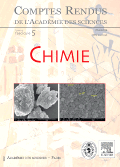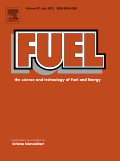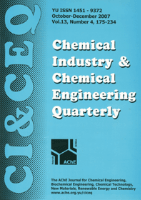
JOURNAL OF ANALYTICAL AND APPLIED PYROLYSIS
Scope & Guideline
Exploring the Frontiers of Pyrolysis Technology
Introduction
Aims and Scopes
- Biomass and Waste Valorization:
The journal extensively covers the conversion of various biomass feedstocks and waste materials into biofuels, biochar, and other valuable chemicals through pyrolysis. This focus on sustainability aligns with global efforts to reduce waste and promote renewable energy sources. - Kinetics and Mechanistic Studies:
Research articles often delve into the kinetics of pyrolysis reactions, providing insights into reaction pathways, mechanisms, and the influences of various parameters on product yields and compositions. - Catalytic Pyrolysis:
The journal highlights advancements in catalytic pyrolysis, exploring the use of various catalysts to enhance product selectivity and yield, particularly in producing high-value chemicals and fuels from biomass and waste. - Analytical Techniques:
The journal emphasizes the application of advanced analytical techniques, such as Py-GC/MS, TG-FTIR, and others, to study the products of pyrolysis and understand the underlying chemical transformations. - Environmental Impact Studies:
Papers discussing the environmental implications of pyrolysis, including the management of hazardous waste and the potential for pollution reduction through effective pyrolysis strategies, are a significant focus. - Innovative Reactor Designs and Process Optimization:
The journal addresses developments in reactor technology and configurations, exploring how different designs can optimize pyrolysis processes for better efficiency and product quality.
Trending and Emerging
- Co-Pyrolysis and Feedstock Blending:
Recent publications show a significant increase in studies focused on co-pyrolysis, where multiple feedstocks are used together to enhance product diversity and yield. This trend reflects a broader interest in maximizing resource utilization. - Integration of Machine Learning and AI:
There is a rising trend in the application of machine learning and artificial intelligence techniques to predict pyrolysis outcomes, optimize processes, and model complex reactions, showcasing the interdisciplinary nature of current research. - Advanced Catalytic Systems:
Research on novel catalysts, including metal-loaded biochars and hybrid catalysts, is on the rise, focusing on improving the efficiency and selectivity of pyrolysis processes for high-value chemical production. - Environmental Applications of Pyrolysis Products:
Emerging studies are increasingly addressing the use of pyrolysis products in environmental applications, such as wastewater treatment and contaminant remediation, showcasing the potential of pyrolysis technology in addressing environmental challenges. - Sustainable Energy Solutions:
There is a growing emphasis on the development of pyrolysis technologies as part of integrated systems for sustainable energy production, including the conversion of waste and biomass into renewable fuels and chemicals.
Declining or Waning
- Conventional Pyrolysis Techniques:
There appears to be a waning interest in traditional pyrolysis methods without advanced modifications or optimizations, as researchers increasingly seek innovative approaches and technologies. - Basic Biomass Pyrolysis Studies:
Research solely focused on the basic pyrolysis of biomass without integration into broader waste management or energy systems is becoming less prevalent as the field moves toward more applied and integrated solutions. - Single-Feedstock Studies:
There is a noticeable decline in research focusing exclusively on single feedstock pyrolysis. Instead, co-pyrolysis of mixed feedstocks is gaining traction due to its potential for improved product yields and quality.
Similar Journals

Reaction Chemistry & Engineering
Catalyzing Innovation in Reaction ChemistryReaction Chemistry & Engineering is an esteemed journal published by the Royal Society of Chemistry, dedicated to advancing the field of chemical engineering. With a focus on pivotal topics including catalysis, process technology, and fluid flow, this journal serves as a critical platform for researchers and professionals seeking to disseminate innovative findings and methodologies. As of 2023, it boasts impressive impact factors, ranking Q2 in Catalysis and consistently appearing in the Q1 categories for several related fields, thus recognizing its influence and relevance in the scientific community. With Scopus rankings placing it among the top 30 journals in multiple chemical engineering categories, Reaction Chemistry & Engineering encourages open dialogue and collaboration among scientists aiming to overcome contemporary challenges in chemical processes. This journal is vital for anyone involved in the development and application of chemical engineering, providing essential insights and fostering progress in this dynamic discipline. Explore the latest research and contribute to future innovations by engaging with the cutting-edge work presented in Reaction Chemistry & Engineering.

COMPTES RENDUS CHIMIE
Innovating Chemistry: Your Gateway to Cutting-Edge Research.COMPTES RENDUS CHIMIE, published by the prestigious Académie des Sciences in France, stands as a significant journal in the fields of chemistry and chemical engineering. With an ISSN of 1631-0748 and an E-ISSN of 1878-1543, this open-access journal has been committed to disseminating high-quality research since its transition to open access in 2020. Featuring a diverse array of studies, the journal covers innovative research trends and applications, while maintaining a Q3 category ranking in both Chemical Engineering (miscellaneous) and Chemistry (miscellaneous) as of 2023. Its Scopus rankings, positioning at #251 out of 408 in general chemistry and #169 out of 273 in general chemical engineering, highlight its growing impact within the scientific community. Authored by a global cohort of scientists and researchers, COMPTES RENDUS CHIMIE is dedicated to the advancement of knowledge and sharing insights that are vital for ongoing research and development in the chemical sciences. Located in the heart of Paris at 23 Quai de Conti, 75006, France, the journal is an essential resource for those passionate about chemistry and engineering disciplines, fostering collaboration and innovation across the world.

ORGANIC PROCESS RESEARCH & DEVELOPMENT
Unleashing Potential: Insights and Innovations in Organic ChemistryORGANIC PROCESS RESEARCH & DEVELOPMENT, published by the American Chemical Society, is a premier journal dedicated to advancing the field of organic chemistry and its applications in process research and development. Since its inception in 1997, the journal has established itself as a leading source of innovative research, receiving a prestigious Q1 ranking in both Organic Chemistry and Physical and Theoretical Chemistry as of 2023. This esteemed publication, accessible in print and online formats, caters to a wide range of topics including synthetic methodologies, reaction engineering, and the integration of green chemistry principles. With a commitment to excellence, it aims to disseminate high-quality research that not only contributes to academic knowledge but also addresses real-world challenges in the chemical industry. The journal's significant impact is reflected in its Scopus ranking, where it holds an impressive position in the 75th percentile among its peers. Researchers, professionals, and students in the field are encouraged to explore and contribute to this influential platform, which plays a vital role in shaping the future of organic process development.

RUSSIAN JOURNAL OF APPLIED CHEMISTRY
Pioneering Research at the Intersection of Chemistry and EngineeringRUSSIAN JOURNAL OF APPLIED CHEMISTRY, published by PLEIADES PUBLISHING INC, serves as a pivotal platform for advancing knowledge in the fields of chemical engineering and general chemistry. With an ISSN of 1070-4272 and an E-ISSN of 1608-3296, this journal has been in continuous publication since 1995 and is set to continue until 2024. Although it operates without an open access model, researchers can access a wealth of innovative research findings, critical reviews, and insightful discussions that reflect the current trends and challenges in applied chemistry. Its rankings place it in Q3 quartiles for both Chemical Engineering and Chemistry as of 2023, indicating its emerging influence within these disciplines. The Scopus rankings further highlight its relevance, positioning it in the lower percentiles, suggesting a fertile ground for researchers aiming to elevate the field. Engaging with this journal can enrich academic and professional understanding, making it an essential resource for anyone dedicated to furthering their expertise in applied chemistry.

Fuel
Igniting Innovation in Energy SolutionsFuel is a premier international journal published by Elsevier Science Ltd, showcasing critical advancements and insights in the fields of chemical engineering, energy engineering, power technology, and organic chemistry. With a significant history dating back to 1922 and continuous publication from 1970 to 2025, Fuel holds an impressive position in the academic community, reflected in its top-tier rankings—Q1 in multiple categories including Fuel Technology and Chemical Engineering for the year 2023. This journal is dedicated to exploring innovative research and application of fuel technologies, driving forward the dialogue on sustainable energy solutions. Researchers and professionals alike will find Fuel to be an essential resource, providing access to high-impact articles that contribute to advancements in methodologies and applications, while navigating the complexities of global energy challenges.

Chemical Industry & Chemical Engineering Quarterly
Connecting Scholars and Professionals in Chemical Innovation.Chemical Industry & Chemical Engineering Quarterly is a distinguished, open-access journal published by ASSOC CHEMICAL ENG that serves as a vital platform for innovative research within the field of chemical engineering. Established in 2000 and actively disseminating knowledge since then, this journal has garnered acknowledgment for its contribution to the field, currently being ranked in the third quartile (Q3) of Chemical Engineering (Miscellaneous) for 2023. With a focus on advancing understanding of chemical processes and facilitating the integration of industry operations with engineering principles, it provides a forum for both theoretical and applied research. The journal is committed to maintaining high standards of academic rigor, supported by its indexed presence in Scopus, where it ranks #173 out of 273 in the general chemical engineering category. As an open-access journal, it promotes the rapid dissemination of research findings, enhancing accessibility for scholars, professionals, and students worldwide. Based in Serbia, the journal is an essential resource for those seeking to stay at the forefront of chemical engineering advancements.

Journal of Chemistry and Technologies
Exploring Technologies for Tomorrow's Solutions.The Journal of Chemistry and Technologies, published by OLES HONCHAR DNIPROPETROVSK NATIONAL UNIVERSITY, is an open access journal dedicated to advancing knowledge in the broad fields of chemistry and chemical engineering since its inception in 2013. With ISSN 2663-2934 and E-ISSN 2663-2942, this journal provides a vital platform for researchers and professionals, particularly in Ukraine and beyond, to share innovative research findings and contemporary technological advancements. Currently ranked in the Q4 quartile in both Chemical Engineering and General Chemistry for 2023, it serves as an enriching resource for those interested in emerging trends and interdisciplinary studies within these domains. The journal adheres to high academic standards while fostering collaboration in the scientific community by offering open access articles that ensure visibility and accessibility to a global audience. As an important part of the academic landscape, the Journal of Chemistry and Technologies aims to inspire future research and development, paving the way for new discoveries and applications in chemistry-related fields.

Reaction Kinetics Mechanisms and Catalysis
Fostering Collaboration in Reaction MechanismsReaction Kinetics Mechanisms and Catalysis is an esteemed academic journal published by SPRINGER, specializing in the fields of catalysis and physical and theoretical chemistry. With ISSN 1878-5190 and E-ISSN 1878-5204, this journal serves as a crucial platform for researchers and professionals to disseminate and engage with cutting-edge findings in reaction kinetics, catalytic processes, and mechanistic insights. Operating under an open access model, the journal ensures broad accessibility to its content, enhancing its impact within the scientific community. As of 2023, it is positioned in the Q4 category in catalysis and Q3 in physical and theoretical chemistry, reflecting its growing influence, yet also its potential for further advancement. Aiming to foster collaborations and innovations, Reaction Kinetics Mechanisms and Catalysis is poised to continue shaping the discourse in its field, making it an essential read for researchers, students, and industry professionals alike.

Chemical Methodologies
Empowering Researchers with Open Access to ChemistryWelcome to Chemical Methodologies, a premier journal published by SAMI PUBLISHING CO-SPC, dedicated to advancing the field of chemistry through innovative research and methodologies. With an ISSN of 2645-7776 and an E-ISSN of 2588-4344, this journal provides a vital platform for researchers and scholars to share their findings in areas encompassing physical, theoretical, and organic chemistry. Despite its initial HIndex and quartile rankings still being established, the journal's evolving impact within the academic landscape is underscored by its Scopus Ranks, which place it in the 35th percentile for physical and theoretical chemistry and the 33rd percentile for organic chemistry. Since its inception in 2022, and continuing through 2024, Chemical Methodologies aims to foster collaboration and knowledge dissemination among academics and practitioners alike, bridging theoretical concepts and practical applications. This open-access platform enhances accessibility for researchers and students worldwide, ensuring that groundbreaking contributions to chemical science reach a broad audience.

Frontiers in Chemical Engineering
Advancing the Frontiers of Chemical InnovationFrontiers in Chemical Engineering is an esteemed open-access journal published by Frontiers Media SA, dedicated to advancing knowledge in the dynamic field of chemical engineering. Since its inception in 2019, this journal has rapidly gained recognition for its rigorous peer-reviewed articles and innovative research contributions, achieving notable quartile rankings such as Q2 in Chemical Engineering and Q3 in both Bioengineering and Catalysis by 2023. With an emphasis on providing accessible and cutting-edge research, the journal caters to a diverse audience of researchers, professionals, and students interested in the latest developments and methodologies within the chemical engineering discipline. Hailing from Lausanne, Switzerland, Frontiers in Chemical Engineering embodies a commitment to enhancing collaborative scientific communication, making crucial research findings available without barrier. By publishing high-quality articles that address both theoretical advancements and practical applications in chemical engineering, this journal serves as a pivotal resource for fostering innovation and collaboration across the global research community.